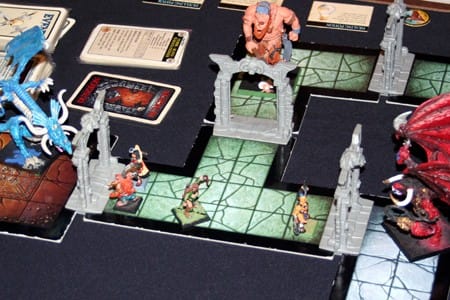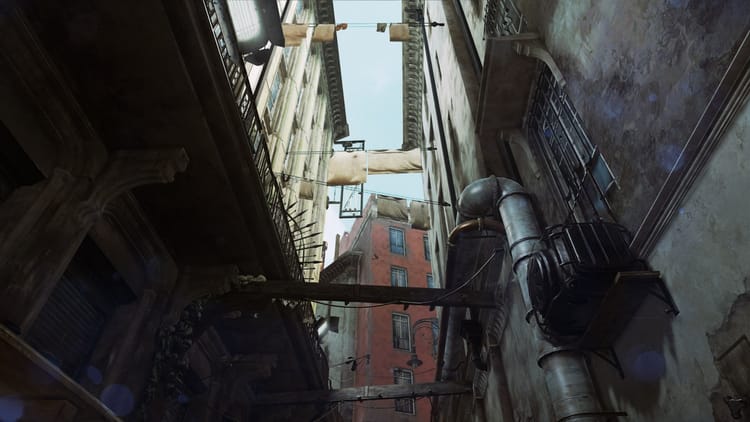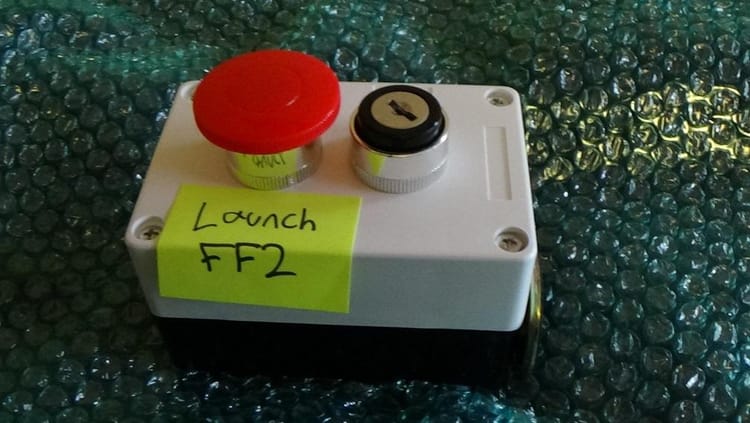You are the challenge in Crawl

Blame Family Guy or Girl Talk, but lord are we a culture that love love loves to dissect everything and assert its source material. It becomes a badge of pride that we were the smartypants who figured it out first. This is nothing new, sure, but it came to mind during my maiden three-way with Crawl, the latest from Australia game-dev duo Powerhoof.
“What is this even retro for?” asked one of my in-game then-enemies and future allies.
I shrugged, “The ‘80s? Gauntlet? Arcades?”
To be fair, it is human nature to want to categorize things. It’s what keeps us away from our enemies, close to our frenemies, and closer still to our friends. We know who’s who and we know what’s what. The same is true with games, but kneejerk assertions do little to provide players with more enjoyment. What’s more, if you’re too busy trying to figure out what influenced what you’re playing, you’re missing the point of videogames as a social experience overall.
But to be fairer still, Crawl’s lineage is tough to pin down, something Powerhoof lightly teased and acknowledged in its release announcement: “Crawl is… bullet-hell beat-em-up meets old-school RPG in an arcadey party game for up to four players.”

I’d posit that it’s because Crawl is simple and knows what it is, even if its audience might not be able to label it properly. It feels something like a toy. It is ostensibly a same-room multiplayer game where you and your friends trade off playing as a procedurally generated dungeon’s monsters. One player is the hero, everyone else tries to vanquish their soul. Ghosts can possess traps or summon monsters. But some of the most fun I’ve had with Crawl had more to do with me and my fellow monsters deploying tiny slime blobs—weak little jellies that can be stomped in a second—only to re-lock the room’s door and keep the hero from further progressing. These blobs serve no real strategic advantage other than to make a really chaotic room filled with traps even more aggravating.
Between bouts of mashing buttons and talking trash, my other buddy theorized that the game owes more to boardgames than videogames. (Though none of us could articulate why or how.) Truthfully, that applies to some of the best designed games — board games are the original local-multiplayer, right?
Dave Lloyd, one half of Powerhoof, agrees. “A lot of the rules and systems that worked for the game ended up being closer to board game rules than traditional RPG rules.”
Barney Cumming, the other half of Powerhoof, explains. “Firstly our environment generation? Unlike most random dungeons, the systems we use operate exactly like the randomized environment generation in Warhammer Quest—a favorite from when I was a kid.”

“You have a series of tiles in the box for different room shapes and corridors, and when you go through a door you roll to see which shape piece gets discovered, and you clip it to the other side of the door to grow the map,” continues Cumming. “This is essentially just how Crawl handles it too, so if we made the same palette of room shapes, the board would look exactly like a Crawl map.”
Cumming went on to theorize how a Crawl boardgame would hypothetically work: you’d plot the levels on a grid system to give character positioning greater significance, then factor in the direction a character faces to calculate weapon damage for flanking or backstab bonuses. It’s a reminder of how distanced many of us who play videogames have become both with its roots and also how to properly interact with our fellow players. Which is maybe what Crawl really recalls: afternoons spent gathered around the cathode ray, button-mashing and smacking around friends, blissfully free from responsibilities and adult tendencies like picking apart everything’s influences.



